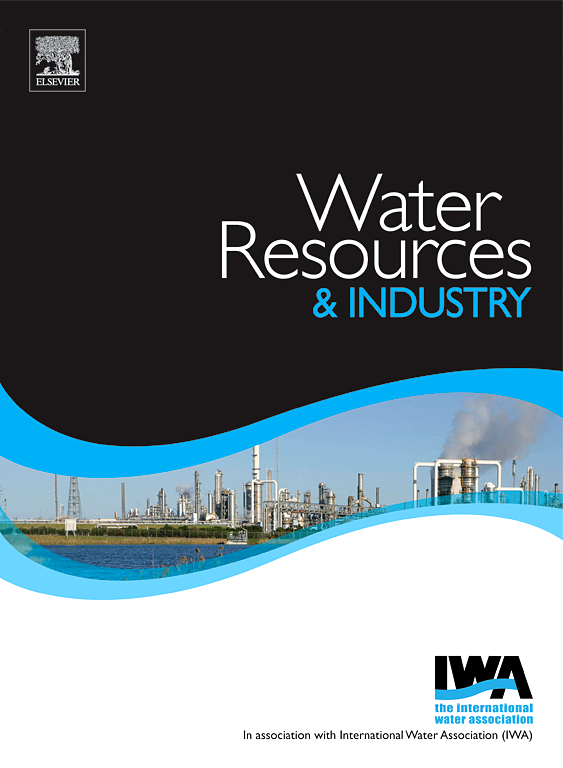介绍超高压低阻盐反渗透技术用于工业卤水的高效浓缩
IF 4.5
3区 工程技术
Q1 WATER RESOURCES
引用次数: 0
摘要
本研究展示了一种新的膜基工艺,该工艺由120 bar的超高压反渗透(UHPRO)和超高压低阻盐反渗透(UHP-LSRRO)组成,并结合盐水浓度背景下的能量回收技术。利用现有的工业规模设备,包括4英寸膜元件和能量回收装置的特定应用性能,进行了基本的能源需求评估和效率分析,以促进加速工业实施。利用本研究的膜组件原型,测定了最大NaCl浓度在170 g/L左右,通量保持在3.5 L/m2h以上。提出了一种结合UHPRO和UHP-LSRRO的简单鲁棒装置设计,并考虑了能量回收的集成。一项能源消耗对比分析显示,当氯化钠溶液从初始浓度65 g/L浓缩到最终浓度300 g/L时,该工艺相对于机械蒸汽压缩(MVC)系统实现了约45%的能源需求减少。本文章由计算机程序翻译,如有差异,请以英文原文为准。

Introducing ultra-high-pressure low-salt-rejection reverse osmosis for energy-efficient concentration of industrial brines
This study demonstrated a novel membrane-based process consisting of Ultra-High-Pressure Reverse Osmosis (UHPRO) and Ultra-High-Pressure Low-Salt Rejection Reverse Osmosis (UHP-LSRRO) at 120 bar, combined with energy recovery technology in the context of brine concentration. Basic assessment of energy demand and efficiency analysis were done based on experimental investigations using available industrial-scale equipment to facilitate accelerated industrial implementation, including the application-specific performance of the 4-inch membrane elements and the energy recovery device.
With the membrane module prototype in this study, a maximum NaCl concentration of around 170 g/L was determined while the flux remained higher than 3.5 L/m2h. A simple and robust plant design combining UHPRO and UHP-LSRRO was proposed, and the integration of energy recovery was considered. A comparative energy consumption analysis revealed that the process achieved an approximate 45 % reduction in energy demand relative to Mechanical Vapor Compression (MVC) systems when concentrating sodium chloride solutions from initial concentrations of 65 g/L to final concentrations of 300 g/L.
求助全文
通过发布文献求助,成功后即可免费获取论文全文。
去求助
来源期刊

Water Resources and Industry
Social Sciences-Geography, Planning and Development
CiteScore
8.10
自引率
5.90%
发文量
23
审稿时长
75 days
期刊介绍:
Water Resources and Industry moves research to innovation by focusing on the role industry plays in the exploitation, management and treatment of water resources. Different industries use radically different water resources in their production processes, while they produce, treat and dispose a wide variety of wastewater qualities. Depending on the geographical location of the facilities, the impact on the local resources will vary, pre-empting the applicability of one single approach. The aims and scope of the journal include: -Industrial water footprint assessment - an evaluation of tools and methodologies -What constitutes good corporate governance and policy and how to evaluate water-related risk -What constitutes good stakeholder collaboration and engagement -New technologies enabling companies to better manage water resources -Integration of water and energy and of water treatment and production processes in industry
 求助内容:
求助内容: 应助结果提醒方式:
应助结果提醒方式:


